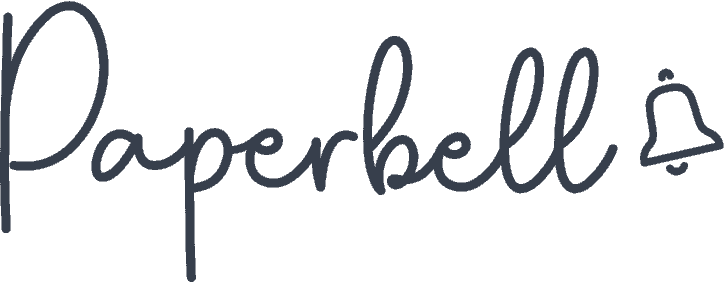Building rapport with a client is more than just small talk. It’s about creating an environment of nonjudgmental acceptance where they can safely open up.
Building a trusting, positive relationship with clients is the foundation for your work together. In this guide, we’ll explore how you can cultivate it.
What Is Rapport Building?
Rapport building is the process of establishing trust, connection, and mutual understanding between you and the client.
As a coach, you must create a safe space for open communication where clients feel comfortable sharing their thoughts, expressing their feelings, and admitting their mistakes.
Having a good rapport with clients lets you go deeper in your sessions and reach a better outcome for your coachee.
3 Benefits of Building Good Rapport with Clients
Here’s why it’s worth establishing a relationship with your client before jumping into coaching them.
1. Deeper Trust
Trust is like the glue that holds coaching sessions together. When clients feel safe, they are more likely to reveal issues they might otherwise withhold.
For instance, if a manager struggles with workplace conflict, they may hesitate to admit their fear to you to avoid being perceived as weak. Making them comfortable allows them to be transparent so you can address their underlying issue rather than surface-level symptoms.
This is even more important with clients who bring more sensitive issues to the session, such as their divorce. They must trust you first to let you in on what happened to them.
2. Better Coaching Outcomes
Good rapport encourages clients to fully engage in the coaching process and commit to the work. If they feel connected to you, they are more likely to actively participate.
In fitness coaching, for example, clients often struggle with consistency. If they feel that you genuinely understand and support their challenges, they may find more determination to follow their workout plan.
3. Higher Client Satisfaction
Clients who have a harmonious relationship with their coach are more likely to be satisfied with the coaching process as a whole. They get more out of their sessions and make more progress toward their goals afterward.
This creates a positive client experience—and some raving testimonials for your business.
6 Effective Strategies to Build Rapport With Clients
Here’s how you can put all this into practice and cultivate positive client relationships.
1. Understand Your Client’s Needs
Developing rapport (and an effective coaching plan) requires understanding your client’s preferences and what approach they best respond to.
Before rushing into tackling challenges, understand their needs so you can tailor your coaching process to them.
To gather information about your client’s preferences, you can establish a client onboarding process or run a simple survey at any time during your coaching program.
Paperbell can automate this process by allowing you to schedule questionnaires and forms to be sent out before a particular session in your package.
You might use questions such as:
- Have you worked with a coach before? If yes, what worked well, and what didn’t?
- What is the biggest change you’d like to see after working together?
- Are our sessions helping you progress toward your goal so far?
- Is there anything else I can do to support you better?
2. Listen Actively
According to Psychology Today, active listening creates deeper connections by making the speaker feel valued and heard. Paying full attention to your client and responding thoughtfully shows that you genuinely care about what they’re saying.
For instance, you may acknowledge their emotions (“This must have been difficult for you”) or paraphrase their concerns (“So just to make sure I understand you correctly, you’re saying that…”)
To practice active listening:
- Avoid interrupting your client unless they drift a lot and go off track from what’s productive to their desired outcome.
- Show interest with verbal affirmations like “I see” or a simple nod.
- Paraphrase or summarize what you’ve understood.
- Ask further questions to clarify what they are saying.
Non-verbal cues matter too. Maintain eye contact and keep an open body language. Eliminate distractions, like notifications and background noise, and give your client the spotlight they deserve.
3. Show Empathy
Empathy isn’t just about understanding your clients on a mental level; it’s about validating their experience and making sure they don’t feel isolated.
In relationship coaching, for example, a client sharing heartbreak will appreciate a coach who responds with warmth and understanding rather than jumping to solutions immediately.
Here’s how you can show empathy to your clients:
- Acknowledge their feelings: Let your clients know their feelings are heard, saying things like “I get why you feel that way” or “That sounds tough.”
- Reflect their emotion back to them: Repeat what your clients say to confirm you’ve understood their feelings, or mirror their body language.
- Show genuine concern: If a client shares something distressing, don’t shy away from expressing concern for how they’re feeling.
- Don’t make it about you: Only use self-disclosure when it supports your client’s progress.
4. Pick the Right Coaching Questions
Coaching questions are the bedrock of getting clients where they want to be in life. However, some require more trust than others.
At the beginning of your coaching process and sessions, start with lighter warm-up questions that help your client feel at ease.
For example, if you’re working with a new business coaching client, you might begin by asking, “What inspired you to start your business?” or “What do you enjoy most about what you do?”
These questions are positive and non-threatening, something you could share with a stranger without necessarily getting vulnerable.
As you go on, you may gradually shift to deeper questions like, “What challenges keep you up at night?” or “What personal fears or doubts are holding you back from reaching your next goal?”
These questions require a stronger relationship because they touch on emotions and uncertainties that clients might hesitate to share with someone they don’t trust yet.
By pacing your questions appropriately, you can create a safe and supportive environment where clients feel comfortable opening up.
5. Find Common Ground
Identifying shared experiences or interests helps you create a meaningful connection. This doesn’t mean oversharing; instead, relate to their struggles authentically.
For example, if a financial coaching client is stressed about saving for retirement, you may briefly share a similar challenge you’ve overcome to make them feel less alone and more understood.
6. Adapt Your Communication Style
Strong communication skills are essential to build good rapport with clients. Mirror their preferences to make your interactions flow better.
If a business coaching client prefers a calm, reflective tone, match that energy. If they’re more enthusiastic and action-oriented, respond to that.
Pay attention to the language your client uses and explain questions and exercises to them in their own words. Matching their vocabulary may encourage even the most pragmatic clients to open up to more abstract concepts.
Remember to look up from your notes from time to time to create eye contact with the client and use encouraging nonverbal communication to help them open up.
These effective communication skills will take you far in your coaching career.
FAQ
How Long Does It Take to Establish Rapport With Clients?
Building rapport is a process that varies for each client. While some clients may get vulnerable right from the beginning, others might require more time to feel comfortable.
Patience builds rapport. Nothing can replace that.
How Can I Maintain Rapport With Clients Over Time?
Maintaining rapport requires ongoing effort. Check in with clients regularly, stay updated on their progress and challenges, and continue showing empathy and support.
Consistency, trustworthiness, and a genuine interest in their success and well-being are crucial for sustaining trust.
How Do I Address Conflicts With a Client Without Damaging Rapport?
Challenges and conflicts can arise in any relationship, including the coach-client dynamic.
When this happens, address conflicts openly and honestly, seeking understanding and finding mutually agreeable solutions. Maintain open communication and adapt your coaching approach as needed.
How Do I Build Good Rapport With Clients From Diverse Backgrounds?
Building rapport with clients from diverse backgrounds involves being culturally sensitive and aware.
Take the time to educate yourself about their culture, values, and communication styles. Avoid making assumptions and strive to understand their unique perspectives.
Above all, show respect, curiosity, and a willingness to learn from their experiences.
Building Rapport With Clients Made Easy
Building rapport with clients allows you to create transformative coaching experiences that empower them to thrive and reach their fullest potential. However, it takes time, and it may be difficult to keep each client’s preferences in mind.
With Paperbell, you can store client notes and surveys in a central place and provide an easy client portal for your coachees.
You can also automate admin tasks, like scheduling, website management, appointment reminders, payments, contracts, and more. Less time managing your business and more to dedicate to building connections!
Try Paperbell today with a free account!
Editor’s Note: This post was originally published in August 2023 and has since been updated for accuracy.









